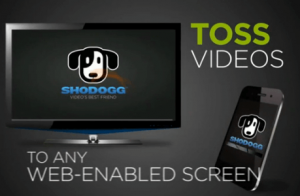The rapid evolution of technology has significantly transformed the way we consume video content. From traditional television to on-demand streaming services, the demand for high-quality, user-friendly platforms has never been greater. As the discussion with Alex Mathieu, a product manager at Alpha Networks, reveals, the integration of artificial intelligence (AI) into video platforms is a game-changer, enhancing user experiences and streamlining operations for content distributors and producers.
The Complexity of Video Platforms
Creating a robust video platform is a multifaceted endeavor that encompasses various components, including video transcoding, distribution, and editorial tools. These elements work in concert to ensure that users have access to a seamless viewing experience. However, building such a platform from scratch is no small feat, even for experienced software engineers. The challenges include not only technical hurdles but also meeting the high expectations of users who are accustomed to the quality offered by established streaming giants like Netflix and Hulu. The tools from Alpha Networks, however, streamlines the process significantly.
AI as a Solution
AI plays a pivotal role in addressing these challenges. As Mathieu explains, AI can elevate the content on video platforms by automating numerous tasks that traditionally require significant manual effort. For instance, AI can generate images, create synopses, and produce keywords, all of which are essential for enhancing discoverability and engagement. Furthermore, AI can analyze viewer behavior to improve recommendation engines, ensuring that users are presented with content tailored to their preferences.
One of the standout features enabled by AI is the ability to create time markers for various video segments. This functionality allows for features like info skipping and chapter navigation, which enhance user experience by providing viewers with greater control over their viewing journey. By integrating these AI-driven capabilities, video platforms can not only meet but exceed the expectations of modern consumers, who seek personalized and efficient content consumption.
Targeting the Right Audience
Alpha Networks operates within a B2B framework, partnering with enterprises such as video content distributors and producers. This focus on business clients allows the company to tailor its solutions to meet the specific needs of different organizations, whether they are starting from scratch or looking to enhance an existing platform. The modular approach adopted by Alpha Networks enables them to deploy comprehensive video solutions in a matter of months, providing businesses with the tools necessary to compete in a crowded market.
Understanding the diverse needs of clients, Alpha Networks offers flexible business models that adapt to various monetization strategies. Whether a client operates on a subscription basis or utilizes ad-supported content, the company can customize its offerings accordingly. This adaptability is crucial in an era where hybrid models are becoming increasingly popular, as seen with platforms like Hulu, which now blends subscription and ad-supported content.
Conclusion: A Powerful Way to Build Your Media Brand
The integration of AI into video platforms is not merely a trend but a necessity for enhancing user experiences and operational efficiency. By automating content management tasks and providing advanced features, AI empowers video distributors and producers to deliver high-quality, engaging content that meets the evolving demands of viewers. As the landscape of video consumption continues to change, those who embrace AI-driven solutions will undoubtedly lead the way in shaping the future of digital entertainment. These tools and more, provided by Alpha Networks, allows media producers to get their platforms to market faster and easier than ever before.
Interview by Scott Ertz of F5 Live: Refreshing Technology.
Get $5 to protect your credit card information online with Privacy.
Amazon Prime gives you more than just free shipping. Get free music, TV shows, movies, videogames and more.
The most flexible tools for podcasting. Get a 30 day free trial of storage and statistics.
Podcast: Play in new window | Download
Subscribe: Apple Podcasts | RSS | More

 Live streaming has become a big business. Between gaming platforms like Twitch and standard platforms like YouTuve and Rumble, it’s never been easier to stream video. Even podcasters have gotten into the video game in larger numbers than those of us who have done it for over a decade. But proper production setups can be incredibly expensive and require a lot of specific hardware. The
Live streaming has become a big business. Between gaming platforms like Twitch and standard platforms like YouTuve and Rumble, it’s never been easier to stream video. Even podcasters have gotten into the video game in larger numbers than those of us who have done it for over a decade. But proper production setups can be incredibly expensive and require a lot of specific hardware. The  The world lives on the internet today, even more so than even just a few years ago. Many types of work have moved from living in an office to working from home or on a hybrid schedule. Gamers spend their time playing games and sharing that gameplay with friends, family, and subscribers on services like Twitch. Even teachers have begun creating content for platforms like YouTube and Rumble showing off their skills. All of this requires a couple of things, but most importantly a solid-quality camera, and the new
The world lives on the internet today, even more so than even just a few years ago. Many types of work have moved from living in an office to working from home or on a hybrid schedule. Gamers spend their time playing games and sharing that gameplay with friends, family, and subscribers on services like Twitch. Even teachers have begun creating content for platforms like YouTube and Rumble showing off their skills. All of this requires a couple of things, but most importantly a solid-quality camera, and the new  For content creators, one of the biggest issues can be ensuring that what the end consumer hears and sees is exactly what you intended. In theaters, this problem has been mostly remedied by creating industry standards that apply across theater chains and projector manufacturers. However, as more media has moved to home viewing, the experience changes significantly, depending on the hardware being used – particularly the television. This is exactly the problem that
For content creators, one of the biggest issues can be ensuring that what the end consumer hears and sees is exactly what you intended. In theaters, this problem has been mostly remedied by creating industry standards that apply across theater chains and projector manufacturers. However, as more media has moved to home viewing, the experience changes significantly, depending on the hardware being used – particularly the television. This is exactly the problem that 



